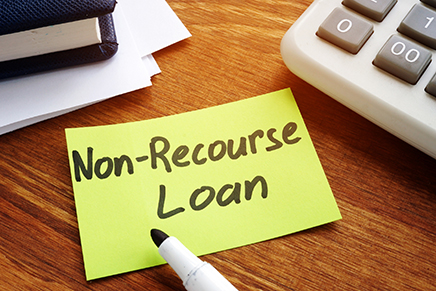Exploring Alternative Retirement Plans: Thinking Outside the 401(k)
When it comes to retirement planning, many individuals automatically think a 401(k) is the go-to option. A 401(k) plan is a tax-advantaged retirement savings plan where employees contribute a portion of their salary, often with employer matching. Contributions can be pre-tax (Traditional 401(k)) or after-tax (Roth 401(k)), impacting when taxes are paid. Funds are invested in options like stocks, bonds, or alternative investments (if your plan allows for alternative investments) and grow tax-sheltered. Employers may set vesting schedules for matching contributions, and withdrawals before retirement may incur penalties. Annual contribution limits are set by the IRS, with additional catch-up contributions allowed for those 50 and older. However, there are alternative retirement plans that offer unique benefits and opportunities worth exploring. In this article, we will delve into these alternative retirement plans and shed light on why thinking outside the 401(k) can be advantageous.
While the 401(k) certainly has its advantages, such as employer match, it's essential to consider other options that may better align with individual financial goals and needs. Alternative retirement plans offer flexibility, tax advantages, and potentially higher returns.
By exploring alternative retirement plans, individuals can diversify their investment portfolios, reduce tax obligations, and have more control over what they invest in. Investing in a diverse range of assets through alternative retirement plans can present viable strategies to enhance overall retirement savings.
So, if you're ready to step outside the 401(k) box and maximize your retirement savings potential, let's dive into the world of self-directed retirement accounts and discover the possibilities that lie beyond.

Why Consider Self-Directed Plans?
While a 401(k) plan is a staple in many retirement strategies, it's not the only option, and in some cases, it may not be the most effective one on its own. One key limitation of a traditional 401(k) is the lack of flexibility. Most employer-sponsored plans restrict you to a predetermined list of investment options, which may not align with your personal financial goals, expertise, or interest in alternative assets.
A self-directed IRA (SDIRA), on the other hand, allows you to take a more active role in shaping your retirement portfolio. It gives you the freedom to invest in a wider variety of assets, such as real estate, private lending, and other non-traditional opportunities that are not typically available in a 401(k).
It’s also important to know that you don’t have to choose one or the other. You can contribute to both a 401(k) and a self-directed IRA, which allows you to diversify across account types and expand your investment reach. However, you’ll need to be mindful of the annual contribution limits set by the IRS. These limits apply separately to IRAs and 401(k)s, so while you can use both, exceeding the caps can result in tax penalties if not managed properly.
If you’re looking to take more control over how and where your retirement funds are invested, a self-directed plan offers the flexibility to do just that, provided you understand the rules and responsibilities that come with it.
Expanding the Definition of Retirement Accounts
When most people think of retirement accounts, they think of rigid structures - contribute, wait, withdraw. But self-directed retirement accounts disrupt that narrative. Instead of sticking to the same formula, these accounts offer a sandbox where creativity meets financial strategy. Investors aren’t limited to the stock market - they can explore opportunities like real estate, promissory notes, private equity, and even startups.
This kind of flexibility isn’t just about portfolio diversification, it’s about aligning your investments with your knowledge, values, and goals. Are you a real estate agent who understands market trends? Or a business owner who sees potential in startups that your financial advisor wouldn’t touch with a ten-foot pole? A self-directed retirement plan lets you capitalize on what you know best.
More importantly, it’s not about choosing between “Traditional” or “Roth.” It’s about asking: What kind of control do I want over my retirement? And how can I make my retirement funds work smarter for me, not just harder? Whether you lean toward tax-deferred growth or tax-free withdrawals, the account structure should serve the strategy, not define it.
Of course, with greater control comes greater responsibility. Navigating alternative investments means doing your homework thoroughly. Unlike traditional portfolios where risk is often managed for you, self-directed investing requires personal accountability. That’s where due diligence comes in. Understanding what you're investing in, and who you're investing with, is essential to protecting your retirement savings and making empowered financial decisions.
Due Diligence
Due diligence is a critical step when investing in alternative assets, as it ensures informed decision-making and minimizes risks. Unlike traditional investment options, alternative assets such as real estate, private equity, or precious metals often come with unique complexities, market dynamics, and regulatory requirements. Thorough research helps investors evaluate the legitimacy, performance potential, and risks associated with these investments. It also involves understanding the tax implications, fees, and potential long-term benefits. By conducting comprehensive due diligence, investors can protect their retirement savings, optimize returns, and confidently diversify their portfolios for a secure financial future. With careful planning and management, real estate can be a valuable addition to a diversified retirement portfolio.
Choosing the right custodian for alternative retirement plans is a crucial decision that also requires careful due diligence. A custodian plays a key role in safeguarding assets, ensuring compliance with IRS regulations, and facilitating transactions. Evaluating a custodian’s reputation, expertise in alternative investments, fee structure, and customer service can help investors avoid costly mistakes and ensure a smooth investment process. The right custodian provides transparency, security, and guidance, giving investors the confidence to effectively manage and grow their retirement savings.
Let’s talk about some of the assets you can invest in with an SDIRA…
Real Estate Investing in a Self-Directed IRA
Real estate has long been a favored alternative investment strategy for retirement planning, offering the potential for both long-term appreciation and consistent income. However, it’s important to understand that “investing in real estate” can take many forms, some far more hands-on than others.
Owning physical property, such as rental homes or commercial buildings, is one of the most direct ways to invest in real estate. This approach can offer significant upside through appreciation and monthly rental income, but it often comes with ongoing responsibilities like property management, maintenance, and dealing with tenants. For those with the time, expertise, or desire to be more involved, this route can be rewarding, but it’s not always practical or desirable for every investor.
Fortunately, there are more passive ways to gain exposure to real estate without the day-to-day demands of ownership. Real Estate Investment Trusts (REITs), Trust Deeds, private placement funds, and syndications provide accessible alternatives. For example, REITs offer fractional ownership in income-producing properties and pay out dividends, with the added benefit of stock-like liquidity. Trust Deeds allow you to act as the lender in a real estate transaction, earning regular interest payments secured by the property. Private funds and syndications pool investor capital to acquire larger assets, distributing income and potential appreciation without requiring hands-on management.
These passive options make it easier for individuals to diversify into real estate as part of a broader retirement strategy, while avoiding the complexity and commitment of managing physical property themselves. Whether you're drawn to the active route of property ownership or prefer a more hands-off approach, real estate can be a powerful tool for building long-term wealth within a self-directed retirement account.
Investing in Precious Metals
Investing in precious metals, such as gold, silver, platinum, and palladium, has long been regarded as a reliable hedge against inflation and economic uncertainty. As part of an alternative retirement plan, precious metals can provide diversification and stability to an investment portfolio. Unlike traditional assets that may fluctuate with the stock market, precious metals tend to retain their value over time, making them an attractive option for those looking to safeguard their retirement savings.
One of the significant benefits of investing in precious metals is their tangible nature. Unlike stocks or bonds, which are intangible and subject to market volatility, physical metals can provide a sense of security. Precious metals that are purchased with IRA funds must be held at a 3rd party depository, otherwise, the IRA is subject to disqualification. Additionally, if you would like to hold precious metals in your retirement account portfolio and keep them tax sheltered, then you must open a self-directed IRA account.
Investing in precious metals also has its drawbacks. The market for precious metals can be volatile, influenced by factors such as supply and demand, geopolitical events, and economic trends. It's essential for potential investors to conduct thorough research and consider their financial goals and risk tolerance before allocating a portion of their retirement savings to precious metals. With informed decision-making, investing in precious metals can be a valuable component of an alternative retirement plan.
When investing in precious metals for alternative retirement planning selecting the right custodian is applicable for all alternatives and not just precious metals. Conducting thorough due diligence is essential. A reliable custodian ensures your investments comply with IRS regulations, securely stores your assets, and offers transparency in fees and services. Without proper research, investors risk working with custodians who lack expertise in precious metals or fail to provide adequate protection for their holdings. Also, due diligence in finding the right precious metals dealer is crucial. By carefully evaluating the dealer’s reputation and track record, you can safeguard your retirement savings and confidently leverage precious metals to diversify and strengthen your portfolio.

Digital Currency Investing in a Self-Directed IRA
In addition to traditional assets like real estate and precious metals, digital currencies, such as Bitcoin and Ethereum, have become increasingly popular as alternative investments for retirement portfolios. However, not all custodians offer services for these types of investments, so it's crucial to choose a custodian that specializes in digital currency and can securely custody these assets for you.
When considering digital currency for your self-directed IRA, one of the most important factors is understanding how to store these assets securely. There are two main types of wallets for digital currency: hot wallets and cold wallets. A hot wallet is connected to the internet and typically used for frequent transactions, but it’s more vulnerable to hacking and cyber-attacks. On the other hand, a cold wallet is offline and stored in a secure, physical location, offering a higher level of protection against cyber threats.
While cold storage solutions may come with higher initial costs, they offer peace of mind by safeguarding your assets. It's also essential to understand that for maximum protection, cold storage devices must be held in a third-party depository to ensure they remain a tax-sheltered investment within your self-directed IRA. The IRS requires that digital currencies and certain other assets within an IRA be stored in a third-party depository, which keeps the investment in compliance with tax laws and maintains its tax-advantaged status.
If you are looking to invest in digital currency through a self-directed IRA, make sure you partner with a custodian who not only supports digital assets but also provides robust cold storage options that comply with IRS regulations. Investing in digital currency can be an exciting and potentially lucrative strategy for retirement, but it requires careful management and security.
Conclusion: It is Time to Rething the best Retirement Plan Options
Retirement planning doesn’t have to follow a one-size-fits-all model, and in many cases, it shouldn't. While a 401(k) may be the traditional path, alternative retirement plans like self-directed IRAs offer more than just tax advantages; they provide flexibility, choice, and a chance to align your investments with what you know and believe in.
Whether you're interested in real estate, private lending, startups, or precious metals, these strategies let you take control and build a retirement portfolio that works for you. But with that control comes responsibility. Doing your homework, choosing the right custodian, and staying engaged are critical steps to ensuring success.
At the end of the day, it's not just about growing your retirement savings, it's about designing a future that reflects your goals, values, and expertise. So, think beyond the 401(k), and start building a retirement plan that’s as dynamic and forward-thinking as you are.



